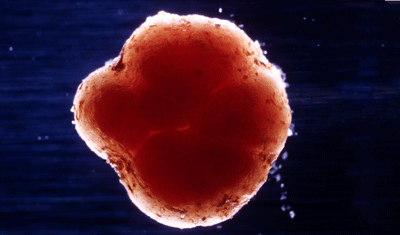
|
Published: 20 December 2010
Legume genome project fixed on nitrogen
Aimed at boosting natural sources of nitrogen in agricultural systems, a new project aims to decipher the genetic code of 100 bacterial strains from the genus Rhizobium.

|
|
Rhizobium bacteria. Credit: CSIRO
|
Rhizobia are soil bacteria that produce nitrogen inside nodules formed on the roots of legume species such as peas, beans or clovers. These symbiotic bacteria contribute about 65 per cent of the nitrogen currently used in agricultural production. However, their nitrogen-fixing performance varies, depending on environmental factors such as soil salinity and acidity, as well as their ability to compete with introduced rhizobia species.
The new project, due to be completed within two years, is a joint venture between the Centre for Rhizobium Studies (CRS) led by Dr Wayne Reeve at Murdoch University, and the Joint Genome Institute in the United States.
The scientists will look at isolates from 15 different countries across a range of climatic and geographical zones. They will target rhizobia from Vavilov Centres, which are regions of high diversity where crops were first domesticated and where many wild relatives can be found.
‘By completing these bacterial genomes and relating this wealth of new information to the environment, we hope to discover traits for competitiveness, legume compatibility, and efficiency of nitrogen fixation,’ comments Dr Reeve.
‘We want to find out what contributes to an effective relationship between the bacteria and their host, and why it is that some species originating in the Mediterranean region, for example, do well here, while others fail to thrive’.



